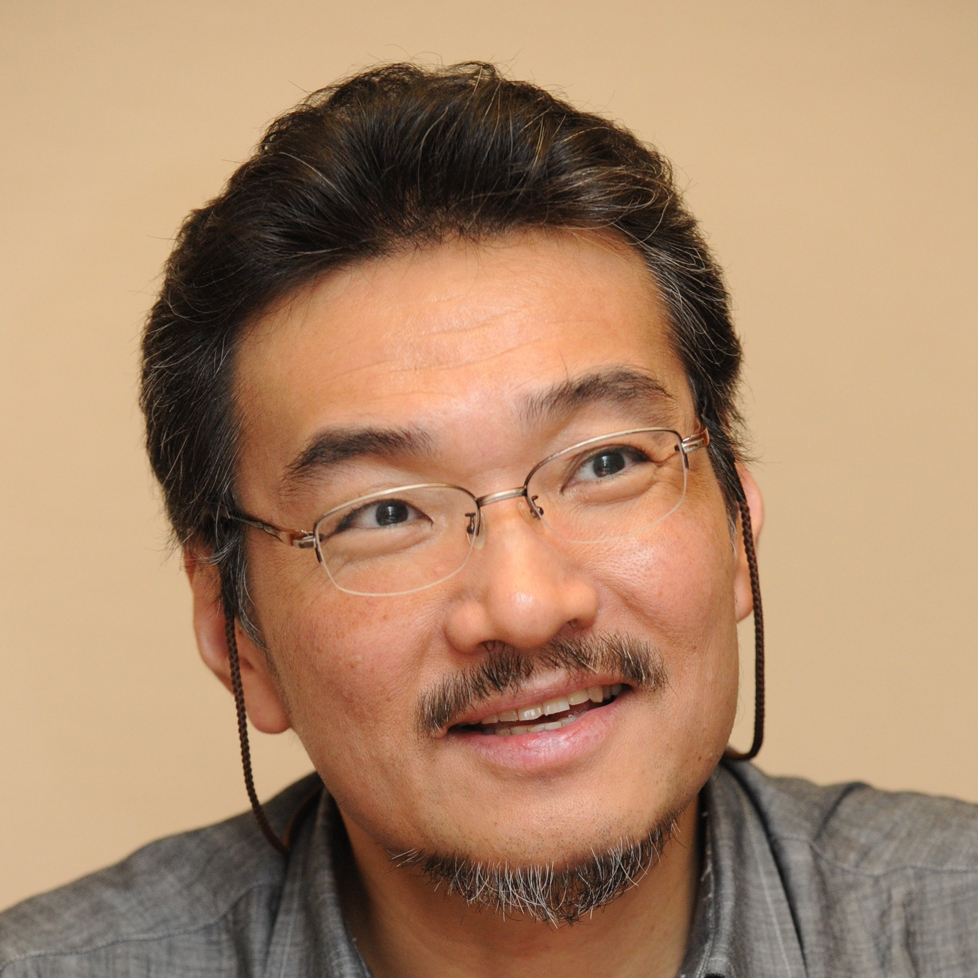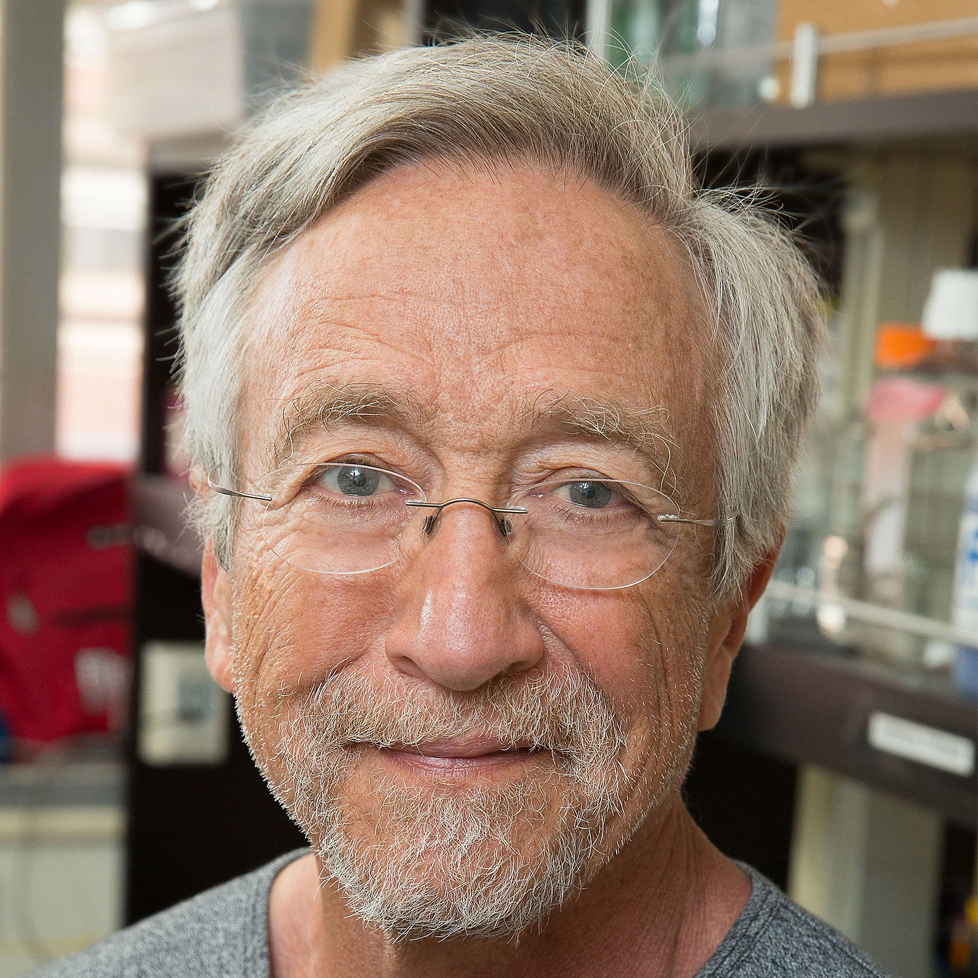Speakers & Abstract
Session 1 – Molecular Regulation of Neural Circuits

Masashi Yanagisawa
International Institute for Integrative Sleep Medicine, University of Tsukuba, Japan
(Day 1, 09.05-09.50)
Toward the Mysteries of Sleep
Despite the fact that the executive neurocircuitry and neurochemistry for sleep/wake switching has been increasingly revealed in recent years, the mechanism for homeostatic regulation of sleep, as well as the neural substrate for "sleepiness" (sleep need), remains unknown. To crack open this black box, we have initiated a large-scale forward genetic screen of sleep/wake phenotype in mice based on true somnographic (EEG/EMG) measurements. We have so far screened >8,000 heterozygous ENU-mutagenized founders and established a number of pedigrees exhibiting heritable and specific sleep/wake abnormalities. By combining linkage analysis and the next-generation whole exome sequencing, we have molecularly identified and verified the causal mutation in several of these pedigrees (Funato et al. Nature 539: 378-383, 2016). Biochemical and neurophysiological analyses of these mutations are underway. Since these dominant mutations cause strong phenotypic traits, we expect that the mutated genes will provide new insights into the elusive pathway regulating sleep/wakefulness. Indeed, through a systematic cross-comparison of the Sleepy mutants and sleep-deprived mice, we have recently found that the cumulative phosphorylation state of a specific set of mostly synaptic proteins may be the molecular substrate of sleep need (Wang et al. Nature, 558: 435–439, 2018).

Michael Nusbaum
Department of Neuroscience, Perelman School of Medicine, University of Pennsylvania, Philadelphia, PA, USA
(Day 1, 09.50-10.35)
Micro-Circuit Flexibility: 35 Years Post-Connectome in the Crab Stomatogastric System
It has become clear that the ‘same’ neurons are often not precisely the same, within and across individuals (e.g. co-transmitter actions and/or electrophysiological properties). However, the consequences of these distinctions for the operation of the neuronal circuits in which such neurons participate remain under-explored. Thus far, studies of well-defined circuits have revealed several shared principles that derive from this neuronal flexibility. For example, circuits are now commonly considered to be ‘state-dependent’ and thus are ‘multifunctional’, meaning that a hard-wired circuit can be configured into different functional circuits that generate different activity patterns (e.g. by different modulatory influences causing distinct changes in the intrinsic and synaptic properties of circuit neurons). It is also possible, as we showed some years ago, that a single circuit can instead be configured differently by separate modulatory influences and yet generate comparable activity patterns. This latter outcome can be a complication for investigators studying circuits in which all the component neurons and their connections are not yet identified. It also raises the issue of how differently-configured circuits that generate the same activity pattern respond to an unchanging perturbation. We are addressing this issue with the baseline hypothesis that the same perturbation elicits distinct outputs from two such circuits, due to their different circuit configurations. We are testing this hypothesis by examining the response to the same perturbations of two differently configured gastric mill (chewing) circuits, in the crab stomatogastric nervous system, that generate the same gastric mill motor pattern. The perturbations include presentation of a native peptide hormone (CCAP) and stimulation of an identified muscle stretch-sensitive sensory neuron (GPR). Our results provide support both for and against the baseline hypothesis, and reveal additional degrees of freedom used by neural circuits to perform their tasks.
References.
Primary Literature-
Saideman SR, Blitz DM, Nusbaum MP (2007) Convergent motor patterns from divergent circuits. J Neurosci 27:6664-6674.
Rodriguez JC, Blitz DM, Nusbaum MP (2013) Convergent rhythm generation from divergent cellular mechanisms. J Neurosci 33:18047-18064.
Review-
Marder E (2012) Neuromodulation of neuronal circuits: back to the future. Neuron 76:1-11.
References.
Primary Literature-
Saideman SR, Blitz DM, Nusbaum MP (2007) Convergent motor patterns from divergent circuits. J Neurosci 27:6664-6674.
Rodriguez JC, Blitz DM, Nusbaum MP (2013) Convergent rhythm generation from divergent cellular mechanisms. J Neurosci 33:18047-18064.
Review-
Marder E (2012) Neuromodulation of neuronal circuits: back to the future. Neuron 76:1-11.

Jack Feldman
Brain Research Institute, University of California Los Angeles, CA, USA
(Day 1, 10.55-11.40)
Breathing Matters: Rhythm, Active Expiration, Sighs and Emotion
Breathing is a well-described, vital and surprisingly complex behavior. Coupled inspiratory and expiratory medullary microcircuits, i.e., preBötzinger Complex (preBötC) and lateral parafacial nucleus, make up the rhythmic core of the breathing pattern generator. I will discuss progress towards cracking the inner workings of this vital core (including a novel hypothesis for rhythmogenesis), and its coordination with orofacial behaviors, and how it strongly influences, and is influenced by, emotion and cognition.

Moriel Zelikowsky
Department of Biology & Biological Engineering, California Institute of Technology, Pasadena, CA, USA
(Day 1, 11.40-12.25)
Neuropeptidergic Control of Stress-Induced Effects on Fear and Social Behavior
Chronic social isolation stress (SIS) causes detrimental effects on the brain and behavior, however its neural basis is poorly understood. We found that prolonged social isolation stress in mice produced a number of maladaptive effects on behavior, including enhanced aggression, persistent fear responses, and increased reactivity to noxious stimuli, suggesting a profound change in internal state. This pervasive behavioral influence was accompanied by widespread upregulation of the neuropeptide Tachykinin2 (Tac2) in multiple brain regions. Pharmacological, neuronal and genetic loss-of-function manipulations in the bed nucleus of the stria terminalis, dorsomedial hypothalamus, and central amygdala, revealed dissociable, region-specific requirements for Tac2 signaling in the distinct behavioral effects produced by SIS. Moreover, artificially increasing the expression and release of Tac2 promoted SIS-like behavioral effects in group-housed mice, implying that upregulation of Tac2 is sufficient to generate a SIS-like state. These data identify Tac2 as an important mediator of prolonged social isolation, which coordinates a global change in brain state via a distributed mode of action.
Session 2 – Integrative Approaches in Neuroscience

Tibor Harkany
Department of Molecular Neurosciences, Medical University of Vienna, Austria
(Day 1, 14.00-14.45)
Molecular Interrogation of Neuronal Identity and Wiring in the Hypothalamic Stress Circuitry
Plant-derived and synthetic cannabinoids are commonly consumed, most notably by teenagers and young adults. Most alarming is the frequency of cannabis use during pregnancy, which is justified by its antiemetic action and the public perception that cannabis is neither addictive nor sufficiently powerful to cause lasting harm to the adult brain. Even though cannabinoids, particularly Δ9-tetrahydrocannabinol (THC, the primary psychoactive component of Cannabis spp.) invariably engage cannabinoid receptors in foetal, neonatal and adult brains, their developmental action vastly differs from adult outcomes due to the activation of precisely-timed signal transduction cascades. During foetal development, THC misroutes axons and impairs synaptogenesis by disrupting the temporal precision of endocannabinoid signaling in actively growing neurites. Herein, the coupling of cannabinoid receptors to the cellular machinery underpinning cytoskeletal dynamics provides a molecular backbone for detrimental THC effects. Likewise, cannabinoids negatively affect both the survival of neurons that migrate and differentiate postnatally and the refinement of experience-dependent synaptic organization and plasticity in the adolescent brain. A case will be made for impaired cellular bioenergetics, particularly mitochondrial function, being a target for phytocannabinoids in postnatal neurons. Overall, cannabinoids are shown to adversely impact both the formation and activity-dependent plasticity of neuronal circuits until after adolescence, thus provoking irreparable modifications to the brain’s wiring diagram that manifest as life-long modifications to social behaviours and cognition in affected offspring.

Hiroki Ueda
University of Tokyo & Center for Biosystems Dynamics Research, RIKEN, Tokyo, Japan
(Day 1, 14.45-15.30)
Towards Organism-Level Systems Biology by Next-Generation Genetics and Whole-Organ Cell Profiling
The system-level identification and analysis of molecular and cellular networks in mammals can be accelerated by 'next-generation' genetics, defined as genetics that does not require crossing of multiple generations of animals to achieve the desired genetic makeup. We recently established a highly efficient procedure for producing knock-out (KO) mice by ‘Triple-CRISPR’ method that targets a single gene by triple gRNAs in the CRISPR/Cas9 system achieves almost perfect KO efficiency (96%-100%). We also established a highly efficient procedure for producing knock-in (KI) mice within a single generation, by ‘ES-mouse’ method, where we treat ES cells using three inhibitors to keep their potency and then inject such ES cells into 8-cell-stage embryos. These procedures dramatically shorten the time required to produce KO or KI mice from about a couple of year down to ∼3 months. The produced KO and KI mice can be also systematically profiled at a single-cell resolution by whole-organ cell profiling realized by a tissue-clearing method ‘CUBIC’ and the advanced light-sheet microscopy. In this talk, I will describe the establishment and application of these technologies to analyze three states (NREM Sleep, REM sleep and awake) of mammalian brains and discuss the current challenges and future opportunities in next-generation mammalian genetics and whole-organ cell profiling toward organism-level systems biology.
References
References
- Susaki et al. Cell, 157(3): 726–39, (2014).
- Tainaka et al. Cell, 159(6):911-24(2014).
- Susaki et al. Nature Protocols, 10(11):1709-27(2015).
- Sunagawa et al, Cell Reports, 14(3):662-77 (2016).
- Susaki and Ueda. Cell Chemical Biology, 23(1):137-57 (2016).
- Tatsuki et al. Neuron, 90(1) : 70–85 (2016).
- Tainaka et al. Annual Revieew of Cell and Developmental Biology, 32, 713-741 (2016).
- Ode et al, Molecular Cell, 65, 176–190 (2017).
- Kubota et al, Cell Rep. 20, 236-250 (2017).
- Nojima et al, Scientific Reports. 9269 (2017).
- Shinohara et al, Molecular Cell. 67, 783-798 (2017).
- Ukai et al, Nat. Protoc. 12, 2513-2530 (2017).
- Murakami et al, Nat. Neuroscience, 21, 625-637 (2018).
- Niwa et al, Cell report, 24, 2231–2247 (2018).
- Tainaka et al, Cell report, 24, 2196–2210 (2018).
Session 3 – Memory, Ageing and Dementia

Jufang He
Department of Biomedical Sciences, City University of Hong Kong
(Day 2, 09.00-09.45)
NMDAR-Controlled CCK Switches LTP and Memory
Memory is stored in neural networks via changes in synaptic strength mediated in part by NMDA receptor (NMDAR) -dependent long-term potentiation (LTP). Here we show that a cholecystokinin-(CCK)-B-receptor (CCKBR) antagonist blocks high-frequency stimulation (HFS)-induced neocortical LTP, whereas local infusion of CCK induces LTP. CCK-/- mice lacked neocortical LTP and showed deficits in a cue-cue associative learning paradigm, and administration of CCK rescued associative learning deficits. HFS-induced neocortical LTP was completely blocked by either the NMDAR antagonist or the CCKBR antagonist, while application of either NMDA or CCK induced LTP after low-frequency stimulation. In the presence of CCK, LTP was still induced even after blockade of NMDARs. Local application of NMDA switched the release of CCK in the neocortex. These novel findings suggest that NMDARs control the release of CCK, which enables neocortical LTP and the formation of cue-cue associative memory.

Carol Barnes
Evelyn F McKnight Brain Institute, University of Arizona, Tucson, AZ, USA
(Day 2, 09.45-10.30)
Impact of Age on Neural Circuits Critical To Memory
Aging is associated with specific impairments of learning and memory, some of which are similar to those caused by damage to temporal lobe structures. For example, healthy older humans, monkeys and rats all show poorer spatial and recognition and memory, than do their younger counterparts. Rats and monkeys do not develop age-related pathology such as Alzheimer’s or Parkinson’s diseases, which makes them good models for assessing functional alterations associated with normal aging in humans. While many cellular properties of medial temporal lobe cells appear to be intact in aging animals, age-related impairments in synaptic function, plasticity and gene expression have been observed. Because information is represented by activity patterns across large populations of neurons, an understanding of the neural basis of cognitive changes in aging requires the examination of the dynamics of behaviorally-driven neural networks. Ensemble recording experiments are described that suggest fundamental changes in the storage and retrieval of information, as well as in high level perceptual processing in aging hippocampus and perirhinal cortical circuits. The data presented are congruent with recent suggestions that rather than uniform deterioration, the aging brain shows region and cell-specific changes consistent with adaptation and compensation in these altered memory circuits.

Nancy Ip
Division of Life Science & State Key Laboratory of Molecular Neuroscience, The Hong Kong University of Science and Technology
(Day 2, 10.50-11.35)
Understanding Synaptic Dysfunctions in Alzheimer's Disease: Insights for Therapeutic Development
Alzheimer’s disease (AD), a leading cause of mortality in the elderly, is characterized by memory loss and impaired cognitive functions. Its pathological hallmarks are the accumulation of amyloid plaques comprising amyloid-beta (Aβ) peptides and neurofibrillary tangles in the brain. The soluble oligomeric forms of Aβ are thought to be detrimental to synaptic functions and plasticity, which lead to cognitive impairment in AD. Thus, investigating the molecular mechanisms that mediate Aβ accumulation and synaptic dysfunctions is critical for understanding of the pathological basis of AD and enables the identification of molecular targets.
In this seminar, I will talk about our recent work, which led to the identification of two cell surface receptors as potential drug targets for AD. My team and I first determined the role of EphA4, a receptor tyrosine kinase and negative regulator of synaptic plasticity in the brain, in mediating the synaptic dysfunctions in AD. EphA4 in the postsynaptic hippocampus is activated by ephrin-A on astrocytes, resulting in dendritic spine loss and a decrease of excitatory synapses. We found that in AD transgenic mouse models, postsynaptic EphA4 is overactivated in the hippocampus, leading to synaptic plasticity impairment. We subsequently identified small molecule EphA4 inhibitors and demonstrated their ability to alleviate impaired synaptic plasticity and pathology in AD. Thus, we discovered a potential therapeutic strategy for AD. Meanwhile, microglia, the major myeloid cell type in the brain, have emerged as important mediators of AD pathogenesis. We first determined that impaired signaling of interleukin-33 (IL-33) and ST2 (its receptor, which is expressed on microglia) is associated with disease progression, and subsequently demonstrated that injection of IL-33 into an AD transgenic mouse model rescued synaptic dysfunctions and contextual memory deficits. The beneficial actions of IL-33 were mediated by regulating the activation state and functions of microglia. Specifically, IL-33 enhanced microglial motility towards amyloid plaques as well as phagocytosis and degradation of Aβ. Our work reveals new signaling pathways for the development of therapeutic interventions for AD.
In this seminar, I will talk about our recent work, which led to the identification of two cell surface receptors as potential drug targets for AD. My team and I first determined the role of EphA4, a receptor tyrosine kinase and negative regulator of synaptic plasticity in the brain, in mediating the synaptic dysfunctions in AD. EphA4 in the postsynaptic hippocampus is activated by ephrin-A on astrocytes, resulting in dendritic spine loss and a decrease of excitatory synapses. We found that in AD transgenic mouse models, postsynaptic EphA4 is overactivated in the hippocampus, leading to synaptic plasticity impairment. We subsequently identified small molecule EphA4 inhibitors and demonstrated their ability to alleviate impaired synaptic plasticity and pathology in AD. Thus, we discovered a potential therapeutic strategy for AD. Meanwhile, microglia, the major myeloid cell type in the brain, have emerged as important mediators of AD pathogenesis. We first determined that impaired signaling of interleukin-33 (IL-33) and ST2 (its receptor, which is expressed on microglia) is associated with disease progression, and subsequently demonstrated that injection of IL-33 into an AD transgenic mouse model rescued synaptic dysfunctions and contextual memory deficits. The beneficial actions of IL-33 were mediated by regulating the activation state and functions of microglia. Specifically, IL-33 enhanced microglial motility towards amyloid plaques as well as phagocytosis and degradation of Aβ. Our work reveals new signaling pathways for the development of therapeutic interventions for AD.

Tara Spires-Jones
Centre for Discovery Brain Sciences, University of Edinburgh, UK
(Day 2, 11.35-12.20)
Losing Connections: Synapse Degeneration in Alzheimer’s Disease is Modulated by the Genetic Risk Gene APOE4
Dementia affects around 50 million people worldwide and currently we have no effective treatments to prevent or slow the disease. Neuropathologically, synapse loss correlates most strongly with the progressive cognitive decline in Alzheimer’s disease (AD). While a central role for synapses in AD pathogenesis and in the spread of pathological proteins through the brain is now well-accepted, we are only beginning to understand the links between genetic risk factors for AD and synapse degeneration. Second to aging, inheritance of the APOE4 allele is the most potent risk factor for developing late onset AD. We have demonstrated a role for apoE4 protein in targeting oligomeric amyloid-β (Aß) to synapses, where it is associated with synapse degeneration in human AD brain. APOE4 is also associated with significant proteomic changes in synapses in human AD brain, which implicates APOE4 in both inflammation and impairing glutamatergic signalling. In mouse models, we observe that APOE4 exacerbates synapse degeneration and that lowering levels of APOE is protective. Together, these data indicate that the strongest genetic risk factor for AD acts at least in part through damaging synaptic connections.
Tzioras, M., et al. (2018). "Invited Review: APOE at the interface of inflammation, neurodegeneration and pathological protein spread in Alzheimer's disease." Neuropathol Appl Neurobiol.
Hudry, E., et al. (2013). "Gene transfer of human Apoe isoforms results in differential modulation of amyloid deposition and neurotoxicity in mouse brain." Sci Transl Med 5(212): 212ra161.
Koffie, R. M., et al. (2012). "Apolipoprotein E4 effects in Alzheimer's disease are mediated by synaptotoxic oligomeric amyloid-beta." Brain 135(Pt 7): 2155-2168.
Tzioras, M., et al. (2018). "Invited Review: APOE at the interface of inflammation, neurodegeneration and pathological protein spread in Alzheimer's disease." Neuropathol Appl Neurobiol.
Hudry, E., et al. (2013). "Gene transfer of human Apoe isoforms results in differential modulation of amyloid deposition and neurotoxicity in mouse brain." Sci Transl Med 5(212): 212ra161.
Koffie, R. M., et al. (2012). "Apolipoprotein E4 effects in Alzheimer's disease are mediated by synaptotoxic oligomeric amyloid-beta." Brain 135(Pt 7): 2155-2168.
Session 4 – Sensation, Cognition and Language

Xu Zhang
Institute of Neuroscience, Shanghai, China
(Day 2, 13.45-14.30)
Somatosensory Neuron Types and Their Pathological Changes
Shanghai Research Center for Brain Science and Brain-Inspired Intelligence; Institute of Neuroscience, Shanghai Institutes for Biological Sciences, Chinese Academy of Sciences, Shanghai, China
Neuron types are traditionally classified by their morphological, anatomical and physiological properties. Recently, the single-cell RNA-sequencing has been used to study the neuron types. Using the high-coverage single-cell RNA sequencing and in vivo electrophysiological recording, we analyzed the transcriptome and functions of somatosensory neurons in the dorsal root ganglion (DRG) of mice. Ten types and fourteen subtypes of DRG neurons have been identified, including six types of mechanoheat nociceptors. Moreover, we investigate the molecular network and mechanism responsible for heat nociception in these mechanoheat nociceptors. Fibroblast growth factor 13 (FGF13), which is a non-secretory protein, was highly expressed in five types of mechanoheat nociceptors. We found that the loss of FGF13 in the mouse DRG neurons selectively abolished the heat nociception. Moreover, we found that FGF13 interacted with Nav1.7 and maintained the membrane localization of Nav1.7 during noxious heat stimulation, enabling the sustained firing of action potentials. Thus, the FGF13/Nav1.7 complex is essential for sustaining the transmission of noxious heat signals. We are also analyzing the changes of DRG neuron types and subtypes in the mouse models of chronic pain induced by peripheral nerve injury. We suggest that neuron types should be defined based on their transcriptome, morphology and function. Such a classification of neuron types is important for revealing the pain mechanisms under the physiological and pathological conditions.
Neuron types are traditionally classified by their morphological, anatomical and physiological properties. Recently, the single-cell RNA-sequencing has been used to study the neuron types. Using the high-coverage single-cell RNA sequencing and in vivo electrophysiological recording, we analyzed the transcriptome and functions of somatosensory neurons in the dorsal root ganglion (DRG) of mice. Ten types and fourteen subtypes of DRG neurons have been identified, including six types of mechanoheat nociceptors. Moreover, we investigate the molecular network and mechanism responsible for heat nociception in these mechanoheat nociceptors. Fibroblast growth factor 13 (FGF13), which is a non-secretory protein, was highly expressed in five types of mechanoheat nociceptors. We found that the loss of FGF13 in the mouse DRG neurons selectively abolished the heat nociception. Moreover, we found that FGF13 interacted with Nav1.7 and maintained the membrane localization of Nav1.7 during noxious heat stimulation, enabling the sustained firing of action potentials. Thus, the FGF13/Nav1.7 complex is essential for sustaining the transmission of noxious heat signals. We are also analyzing the changes of DRG neuron types and subtypes in the mouse models of chronic pain induced by peripheral nerve injury. We suggest that neuron types should be defined based on their transcriptome, morphology and function. Such a classification of neuron types is important for revealing the pain mechanisms under the physiological and pathological conditions.

Jan Schnupp
Department of Biomedical Sciences, City University of Hong Kong
(Day 2, 14.30-15.15)
Neural Coding of Real-World Sound Features in Natural and Electric Hearing: Pitch, Timbre and Location
When we listen to sounds such as speech, our brains must compute a number of features from the sound waves, including the pattern of so called formant spectral peaks which determine the sound's timbre and make it possible to identify phonemes, its periodicity which characterizes the voice pitch, and binaural and spectral cues which allow us to infer sound source direction. Much of what we know about how these essential perceptual attributes of sound are encoded and processed in the early stages of the ascending auditory pathway comes from studies performed on experimental animals. Many of the fundamental aspects of vocal communication are generic across all mammals. In my talk I will give an overview of a number of studies in rats, ferrets, gerbils and mice which elucidate the neural processing of vocalisation sounds and of spatial cues in the ascending auditory pathway, and I will discuss the relevance of these findings to the design of cochlear implants, a prosthetic technology increasingly widely used to restore hearing in patients who have suffered severe or profound hearing loss due to damage of sensory receptors in the inner ear.

William Newsome
Wu Tsai Neurosciences Institute, Stanford University, CA, USA
(Day 2, 15.35-16.20)
Tracking Covert Decision States Through Neural Population Recordings in Primate Premotor Cortex
The neural mechanisms underlying decision-making are typically examined by statistical analysis of large numbers of trials from sequentially recorded single neurons. Averaging across sequential recordings, however, obscures important aspects of decision-making such as variations in confidence and 'changes of mind' (CoM) that occur at variable times on different trials. I will show that the covert decision variables (DV) can be tracked dynamically on single behavioral trials via simultaneous recording of large neural populations in prefrontal cortex. Vacillations of the neural DV, in turn, identify candidate CoM in monkeys, which closely match the known properties of human CoM. Thus simultaneous population recordings can provide insight into transient, internal cognitive states that are otherwise undetectable.

Sophie Scott
Institute of Cognitive Neuroscience, University College London, UK
(Day 2, 16.20-17.05)
Neural Systems Implicated in the Production and Perception of Human Vocalisations
Advances in primate neuroanatomy and neurophysiology, alongside developments in human functional imaging studies, have permitted a range of development in our understanding of the neurobiology of human vocalisation behaviour, and have permitted us to move beyond a simple reliance on Broca’s and Wernicke’s areas as explanatory constructs. In my talk I will give an overview of how these perception and production networks operate, and how factors such as verbal vs non verbal utterances, and voluntary vs involuntary vocalisations, modulate the networks that are recruited. I will address the roles of hemispheric asymmetries and of computational differences within auditory fields that underpin these networks.
